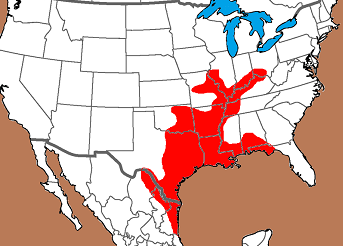Outline is Representative of Size and Shape:


Name Details:
Identified By: Dee Ann Suhm, Alex D. Krieger, and Edward B. Jelks
Named For: Boney scale from the Alligator Gar fish
Date Identified: 1954
Type Site:
Identified By: Dee Ann Suhm, Alex D. Krieger, and Edward B. Jelks
Named For: Boney scale from the Alligator Gar fish
Date Identified: 1954
Type Site:
Point Validity:
It has long been suggested that these scales were used as projectile points, but no in-depth studies were conducted to establish this hypothesis. Patterson in 2001 conducted an in-depth study of the cultural context in which garfish scales were recovered. He concluded that theses scales were recovered in a cultural context while other studies have concluded that they could serve as a durable projectile. However, there is not widespread acceptance of this type.
Gar Scale
Cluster: Description of Physical Characteristics and Flaking Pattern:
This is a small scale from the Alligator Garfish. Patterson (1994) distinguishes natural scales and those used as projectiles as scales that have been modified by grinding on lateral edges forming a symmetrical tip and well defined stem.
Size Measurements:
Commonly Utilized Material:
Alligator Garfish scales
Alligator Garfish scales
Additional Comments:
It is generally felt that theses scales (if they were used which is controversial), would have been most likely used after the introduction of the bow and arrow. However, Gar scales have been recovered from many sites dating back as early as the Early Archaic period (Kendrick's Hill site, Texas 41JK35 and Possum Bluff, Texas 41JK24). Kendrick's Hill site had 13 scales with asphaltum, but the asphaltum was on not only the "stem" but also the faces of the scales. Scales have also been recovered from burials suggesting some cultural context. It is believed by some archaeologist that these were used as arrow tips, but other archaeologist do not feel that these were used and do not include them as possible points.
Moore (2015) notes that the "shape of these scales is ideal for hafting without modification". Shum et al (1954) point out that the natural stem of some specimens have been altered with cut marks being sometimes present.
A study by Costa and Fox (2016) looked at the the durability of Garfish scales being used as projectile points. They found that Garfish scales were as effective as flint points with a little modification. The serrated edge of the scale made the point more likely to fracture on impact. However, slight grinding of the edges to remove the serrations greatly improved the durability of the scale.
It is generally felt that theses scales (if they were used which is controversial), would have been most likely used after the introduction of the bow and arrow. However, Gar scales have been recovered from many sites dating back as early as the Early Archaic period (Kendrick's Hill site, Texas 41JK35 and Possum Bluff, Texas 41JK24). Kendrick's Hill site had 13 scales with asphaltum, but the asphaltum was on not only the "stem" but also the faces of the scales. Scales have also been recovered from burials suggesting some cultural context. It is believed by some archaeologist that these were used as arrow tips, but other archaeologist do not feel that these were used and do not include them as possible points.
Moore (2015) notes that the "shape of these scales is ideal for hafting without modification". Shum et al (1954) point out that the natural stem of some specimens have been altered with cut marks being sometimes present.
A study by Costa and Fox (2016) looked at the the durability of Garfish scales being used as projectile points. They found that Garfish scales were as effective as flint points with a little modification. The serrated edge of the scale made the point more likely to fracture on impact. However, slight grinding of the edges to remove the serrations greatly improved the durability of the scale.
Distribution:

Distribution Comments:
Texas coast and some inland sites, especially those on the lower reaches of rivers entering the Gulf of Mexico. Found throughout the lower Mississippi River basin and rarely into the Ohio River basin
Texas coast and some inland sites, especially those on the lower reaches of rivers entering the Gulf of Mexico. Found throughout the lower Mississippi River basin and rarely into the Ohio River basin
Age / Periods:
Date: 3,000 - 100 B.P. (see additional comments)
Cultural Period: Woodland to Historic
Glacial Period: Neoglacial to Modern Times
Culture:
Date: 3,000 - 100 B.P. (see additional comments)
Cultural Period: Woodland to Historic
Glacial Period: Neoglacial to Modern Times
Culture:
Age Details:
Similar Points:
Other points in this cluster / Related / Associated Points:


